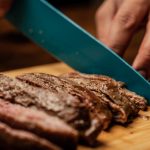Navigating restaurant menus while sticking to a Modified Keto diet can feel like a culinary minefield, but it doesn’t have to be. Dining out should be an enjoyable experience, not a source of stress. With a few simple strategies, anyone can savor delicious meals without straying from their dietary goals.
From understanding menu lingo to making smart swaps, these tips will help diners stay on track. Whether it’s a casual lunch spot or a fancy dinner venue, knowing how to make keto-friendly choices ensures that dining out remains a pleasure, not a challenge.
Understanding the Modified Keto Diet
The Modified Keto Diet emphasizes a balanced intake of macronutrients with a higher fat content, moderate protein, and reduced carbohydrates. This variation of the traditional ketogenic diet typically allows slightly more carbs—usually between 20-50 grams per day—compared to the strict keto diet, which often limits carbs to under 20 grams daily. It aims to provide flexibility, making it easier to follow long-term.
Key Principles
- Increased Fats: Promote satiety and energy. Examples include avocados, nuts, seeds, and olive oil.
- Moderate Proteins: Essential for muscle maintenance. Opt for sources like chicken, fish, eggs, and tofu.
- Reduced Carbohydrates: Focus on non-starchy vegetables like leafy greens, broccoli, cauliflower, and zucchini.
Benefits
- Sustainable: Easier to maintain than stricter versions. Allows for occasional indulgences without derailing progress.
- Flexibility: Adapts well to various dining scenarios, reducing the stress of strict adherence.
- Enhanced Energy Levels: Provides consistent energy without the crashes associated with high-carb diets.
Common Modifications
- Carb Cycling: Incorporates periodic higher-carb days to support metabolism and energy.
- Intermittent Fasting: Often combined with a modified keto diet. Involves scheduled eating windows to enhance fat burning.
- Customized Macros: Tailoring macronutrient ratios to individual needs and activity levels. Some may need more carbs if highly active, while others may stick to the lower end of the carb spectrum.
Practical Tips for Dining Out
- Research Menus: Look up restaurants’ menus online before dining. Identify keto-friendly options and modify them if necessary.
- BYO (Bring Your Own): Carry keto-friendly condiments, like salad dressings or sauces. Helps manage hidden carbs in restaurant-prepared items.
- Communicate Needs: Talk to servers about specific dietary restrictions. Most restaurants can accommodate special requests.
- Focus on Whole Foods: Opt for dishes with whole ingredients. Avoid heavily processed items that may contain hidden sugars and carbs.
- Breakfast: Omelet with spinach, mushrooms, cheese, and a side of avocado.
- Lunch: Grilled chicken salad with mixed greens, nuts, olive oil, and vinegar.
- Dinner: Salmon filet with asparagus and a rosemary butter sauce.
- Snacks: Greek yogurt with chia seeds or nuts, or a handful of olives.
Understanding these aspects enables diners to enjoy meals at restaurants without compromising their Modified Keto Diet goals. By applying these principles, they can make informed choices that align with their dietary needs and preferences.
Preparing to Dine Out
Researching Restaurants
Looking for Modified Keto-friendly restaurant options? Start by seeking establishments known for accommodating dietary preferences. Search for reviews highlighting keto-friendly menu items or flexibility in menu customization. Use websites like Yelp and TripAdvisor, which feature user reviews and ratings. Pinpointing restaurants that cater to various dietary needs ensures fewer surprises upon arrival.
Begin your search with keywords like “keto-friendly restaurants” or “low-carb dining.” Focus on places offering a variety of proteins, vegetables, and healthy fats, ensuring you can find suitable choices. Restaurants with diverse menus, like steakhouses and seafood joints, often provide more customizable options.
Reviewing Menus Online
Once you’ve identified potential restaurants, review their menus online. Many restaurants publish menus on their official websites, making it easier to determine if they offer keto-friendly dishes. Focus on sections featuring proteins, salads, and vegetable-based sides.
Look for keywords such as “grilled,” “roasted,” or “steamed,” which usually indicate lower-carb preparation methods. Check if there’s a “create-your-own” section, giving flexibility in meal composition. Study descriptions for hidden carbs in sauces or dressings. If unsure, note down questions to ask your server to ensure your meal aligns with your Modified Keto Diet goals.
Making Smart Choices
Opting for Low-Carb Options
Diners adhering to a Modified Keto diet can make intelligent choices to stay within their carb limits. Select protein-packed dishes like grilled chicken, steak, or fish that provide essential nutrients without unnecessary carbohydrates. Replace high-carb sides such as fries or mash with non-starchy vegetables like broccoli, spinach, or cauliflower.
Salads can be a great option if topped with healthy fats like avocado, olives, and a protein source. Ensure the dressing is oil-based or ask for olive oil and vinegar on the side to avoid hidden sugars. Skip bread baskets and opt for appetizers that focus on fats and proteins, like deviled eggs or shrimp cocktail.
Customizing Your Order
Tailoring meal orders helps maintain the Modified Keto diet effectively. Politely request modifications to dishes to align with your dietary needs. Substitute high-carb components with nutrient-dense alternatives, such as swapping pasta for zucchini noodles or asking for extra green veggies instead of rice.
Ask servers to hold sugary sauces and replace them with butter, oil, or cheese-based options to maintain low-carb intake. Request burger patties without the bun and enjoy them atop a salad or with a side of vegetables. For beverages, choose water, unsweetened tea, or sparkling water with a slice of lemon.
Tips for Specific Cuisines
Dining out on a Modified Keto diet can be enjoyable with a little planning. Here are some tips for navigating various cuisines.
Italian Restaurants
Italian menus can pose a challenge due to pasta and bread, but keto-friendly options exist. Opt for grilled meats (like chicken or steak) or seafood (like shrimp or salmon) paired with vegetables. Instead of pasta, request zucchini noodles or extra vegetables. Salads, such as Caprese (mozzarella, tomatoes, basil, olive oil), provide a satisfying keto choice. Watch out for high-carb dressings; use olive oil and vinegar.
Antipasto platters with meats, cheeses, olives, and roasted peppers offer a substantial appetizer. Avoid breadsticks and choose a protein-rich soup such as an Italian wedding soup—sans pasta. When ordering pizza, request a crustless version or load it with meats, cheeses, and vegetables—ignoring the crust altogether.
Asian Cuisine
Asian restaurants can offer many Modified Keto options. Opt for grilled or stir-fried meats (chicken, beef, pork) with non-starchy vegetables (broccoli, peppers, greens). Avoid rice and noodles; ask for lettuce wraps or extra veggies as substitutes. Sushi restaurants can create sashimi plates (raw fish without rice) or cucumber-wrapped rolls.
Choose dishes like chicken satay, miso soup, or egg drop soup. Beware of sauces—soy sauce is generally fine, but teriyaki and hoisin often contain sugar. Request dishes with minimal sauce or ask for it on the side. Salad with ginger dressing can be a good start, just confirm it’s low in sugar.
American Diners
American diners usually offer a range of keto-friendly choices. Start with omelets or bacon and eggs for breakfast. Burgers can be served on lettuce wraps instead of buns; focus on toppings like avocado, cheese, or bacon. Grilled chicken, steak, or fish with a side of non-starchy vegetables (like broccoli or spinach) works well.
Salads with leafy greens, cucumbers, avocado, and protein (chicken, steak, hard-boiled eggs) make a filling meal. Ask for dressings on the side, ideally oil-based. Avoid fries; choose side salads or steamed vegetables. Diner menus often allow for customization—never hesitate to request alterations for a keto-friendly meal.
Mexican Food
Mexican cuisine offers flavorsome keto possibilities. Choose fajitas (without tortillas) and enjoy the grilled meat (chicken, beef, shrimp) with bell peppers, onions, guacamole, and sour cream. Opt for burrito bowls and skip rice and beans; fill with lettuce, cheese, salsa, and avocado.
Carnitas (braised pork) or chile verde (pork in green sauce) with a side of grilled vegetables works well. Ceviche, a seafood dish with lime, chili, cilantro, and avocado, offers a refreshing option. Watch out for hidden carbs in salsas and sauces, confirming with the server if unclear. Enjoy fresh salads topped with proteins and avocado, but skip the tortilla chips.
Managing Social Situations
Dining out with friends and family while on a Modified Keto diet can be enjoyable with some preparation. Social situations often bring varied food choices, but with clear strategies, one can stay aligned with dietary goals without feeling isolated.
Communicating Your Dietary Needs
Communicating dietary preferences to friends helps set expectations. They can choose restaurants with keto-friendly options if they’re aware. At the restaurant, informing the server about specific dietary needs can lead to better meal recommendations and modifications to fit the Modified Keto diet.
Choosing The Right Venue
Choosing a venue known for its keto-friendly choices ensures a more relaxed dining experience. Restaurants offering a variety of protein-based dishes, like grills and steak houses, are excellent choices. Using platforms like Yelp and TripAdvisor to read reviews and look for keto-compliant mentions helps narrow down suitable venues.
Navigating Group Orders
When dining as a group and sharing dishes, opting for items that align with keto principles ensures everyone can enjoy while the diet stays intact. When ordering pizza, for example, selecting a veggie-packed option and eating the toppings without the crust keeps the carbohydrate count low. Sharing appetizer platters consisting of cheese, meats, and low-carb vegetables also makes for a cohesive dining experience.
Handling Special Occasions
Special occasions often come with set menus. When attending such events, reviewing the menu beforehand and contacting the venue to discuss dietary modifications may be necessary. For example, swapping high-carb sides for extra vegetables or asking for dressings on the side can help maintain the diet. If menu alterations aren’t possible, eating a small keto-friendly snack before the event may prevent overindulgence.
Being Prepared For Unexpected Situations
Unexpected dining situations can arise. In these scenarios, focusing on basics such as grilled meats, salads, and non-starchy vegetables can be a safe bet. Carrying small keto-friendly snacks, like nuts or cheese, ensures there’s always something to eat if menu options are limited.
Staying Positive And Flexible
Staying positive and flexible is vital during social dining. Occasional indulgences won’t derail progress if overall dietary balance is maintained. Being adaptable and enjoying the social aspect of dining enhances the experience without the stress of strict adherence.
Conclusion
Dining out on a Modified Keto diet doesn’t have to be a daunting task. With a bit of preparation and mindful choices, anyone can enjoy delicious meals at their favorite restaurants. By understanding menu terminology, making smart substitutions, and communicating dietary needs, diners can stay aligned with their keto goals without feeling deprived.
Researching menus in advance and focusing on whole foods can make a big difference. Remember, it’s all about balance and flexibility. With these tips, dining out can be an enjoyable and stress-free experience, allowing everyone to savor the moment while staying true to their dietary preferences.
Barbara has lost 100 pounds following the Modified Keto Diet. She started following the Keto Diet in July of 2019. She enjoyed the meals and the healthy lifestyle so much that she studied under the Speed Keto creator, Dr. Harlan Kilstein, and became a Certified Keto Coach in July 2021. After her husband was diagnosed as diabetic, she became a Certified Diabetic Coach in 2022. She coaches clients both in individual and group settings. Throughout her journey with the Modified Keto Diet, her A1C dropped from 6.5 to 4.9. She continues to enjoy healthy eating and helps others to do the same.







